High-quality heating even in the most terrible frosts! Features of heating a private house, types
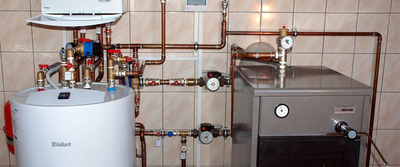
In latitudes with cold winters, heating your home is the key to survival. Well-designed heating can maintain a constant temperature in the house all year round.
Many different types of heating systems are used to heat private homes.
Content
What does an autonomous heating system in your home consist of?
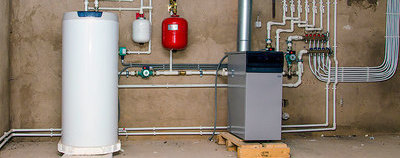
Any heating system consists of the following elements:
- Source of thermal energy. You can heat your house with a solid fuel boiler, as well as a gas or electric one.
- Thermal energy transfer system to all roomsThe most convenient system is considered to be one with a liquid heat carrier, but there are systems with air temperature transfer.
- The coolant moves through the pipes to heat emitters - heating batteries. There it gives off its heat and returns back.
When designing heating for a one-story or two-story house The following nuances should be taken into account:
- Type of energy received. If the heat is obtained by burning wood, gas or liquid fuel, it will be necessary to arrange ventilation and a chimney, lay ventilation ducts under them. Installation of heating devices requires a separate boiler room.
- When designing an open heating system It is worth planning the slopes of the pipes and their passage through doors and walls. After the house is built, it may become apparent that a window or doorway will interfere with the installation of the pipe.
- For a large house with several floors and a basement, it is used a branched system of pipes and batteriesIt is advisable to plan all branches with equal resistance values.
- To improve efficiency and create convective air flows The batteries are placed near the outer wall, under windows, and at the entrances. Correctly positioned radiators will help distribute heat evenly throughout the house and prevent cold air from entering the room.
During the design process, a detailed pipeline diagram is drawn, the calculated boiler power is specified, batteries are calculated for each roomA correct design will save money on purchasing materials and prevent malfunctions.
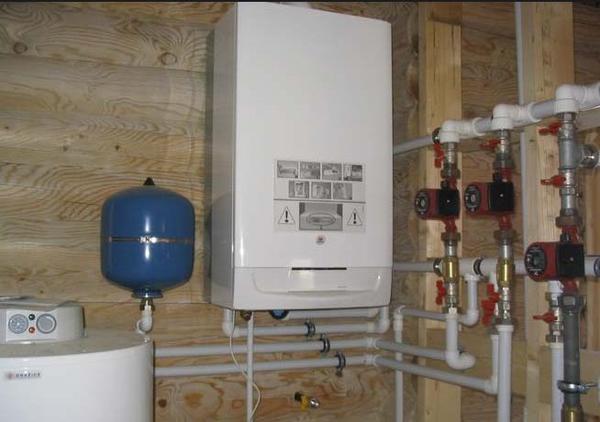
Photo 1. Wall-mounted gas heating boiler. Used in autonomous heating systems of private houses.
An important stage of system installation is start-up and adjustment. It is necessary to plan how the liquid coolant will fill the pipes and radiators. The air remaining in the pipes will not let the heat through.
Important! To release air, a valve is installed at the highest point of the system. Mayevsky crane - it releases air without releasing liquid. When the coolant boils, superheated steam comes out through it. Air release valves should be planned on batteries and pipe loops.
Electrical systems: underfloor heating, heat pumps and others
Along with water heating, technologically advanced modern types of heating based on electricity are gaining popularity. They are:
- Convection using heaters. Convector batteries heat the air passing through the heated heat exchanger. For small cottages or houses with temporary residence, this is the cheapest and simplest option. When designing, it is worth considering the heat loss of the house, the power of the convectors, their number and location.
- "Warm floor" from heating cable. This is an opportunity to increase comfort and distribute heat evenly throughout the house. Heating mats are laid under the floor covering.
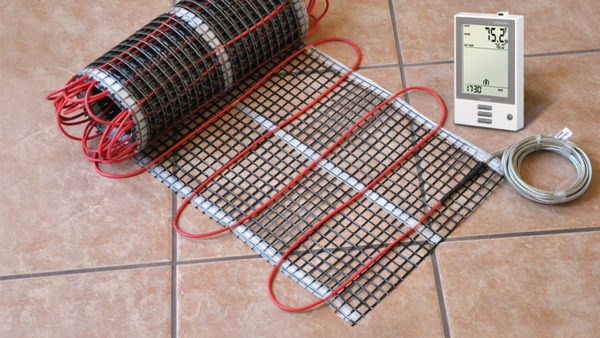
Photo 2. Warm floor made of heating cable. Additionally equipped with a thermostat, allowing you to select the optimal heating temperature.
- Infrared films. They are placed behind the finishing of walls or ceilings and emit infrared heat. The air in such a room remains cold, but surrounding objects heat up. Many consider this mode to be the most comfortable.
- Heat pumps, taking heat from the surrounding air or from the thickness of the earth. These are the most economical systems, as they use an eternal and free source of thermal energy. A significant disadvantage of the system is the high cost of equipment and the complexity of installation.
- Ceramic panels. Unlike oil convectors, the main method of heat transfer is radiant heat. The efficiency of such panels is higher, but there are a number of installation requirements: the panels cannot be covered with curtains or furniture. In this case, the heater will only work as a convector. Ceramic panels have an attractive appearance and operate silently.
Heating residential premises with solar panels
Alternative energy appeared during the hydrocarbon crisis. For a private home it is possible to use solar energy. Types of heating:
- Solar collectors and liquid heat accumulator. The heat stored by the collector during the day is collected in a heat accumulator - a container with water. Depending on the tasks facing the heating, the number of collectors and the volume of the accumulator may vary.
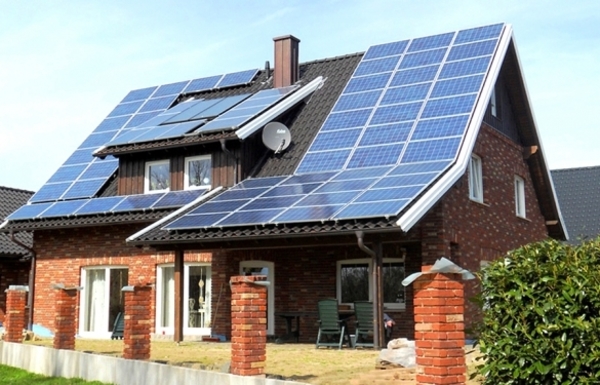
Photo 3. Solar panels installed on the roof of a private house. The devices are alternative heating sources.
- Pumping heated air into a heat accumulator made of stones. The essence of the system is as follows: in summer, hot air from under the roof or dry collectors is pumped through a volumetric heat accumulator. In winter, the "preserved" heat is gradually transferred to the house through a heat exchanger. The disadvantage of the system is its high cost and complexity of implementation.
- Pconversion of solar energy into electrical energy and heating of the coolant inside the house. Solar electric panels have a long service life and high efficiency. This system is used when solar energy acts as an auxiliary to a liquid heating system.
Heating of the basement floor
In houses with a full basement, organizing heating is a whole task. It is necessary to heat the basement, this will prevent freezing and destruction of the foundation walls. In order to heat the house without heating the ground around it, waterproofing and insulation will be required. Suitable for heating the basement are electrical systems and installation of additional batteries. If there is a risk of freezing, it is better to install ceramic heaters or oil convectors - They are not afraid of the cold.
Features of heating frame private houses
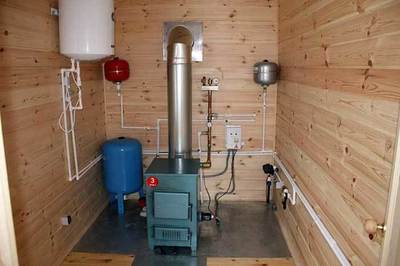
Houses built using frame technology have some peculiarities in the organization of heating. These houses are well insulated, but have low heat capacity.
This means that the heaters in the house must constantly compensate for heat loss, since the walls of the house are not able to accumulate heat.
The options for strong, rapid heating are eliminated: fireplaces, most wood-burning metal stoves. Depending on the type of fuel, it is better to use massive stoves (only if there is a massive foundation), a gas or electric boiler, ceramic or oil convectors. Solar energy can be a good help.
Expenses
To choose the optimal heating system, it is important to calculate heating costs. The cost is calculated according to the following algorithm:
- We calculate approximate heat losses houses. General heat loss tables for different types of buildings, sizes and locations can be found online.
- We calculate the amount of fuel, which must be burned to replenish the heat loss of the house during the heating season. To do this, divide the heat loss by the calorific value of a unit of fuel, which will give the amount of fuel needed. Multiply the resulting figure by coefficient 1.2 — error in the efficiency of the system and inaccuracy of calculations.
- Multiply the amount of fuel at its average price.
- We add to the resulting cost of fuel cost of equipment maintenance and repair.

- We divide the cost of heating equipment by its service life — we get the depreciation cost.
- Adding average seasonal depreciation of the heating system — we get the estimated cost of heating per year.
There will certainly be inaccuracies and conventions in the calculation. In any case, significantly reducing the cost will help insulation measures Houses.
Useful video
Watch the video, which tells about the features of heating a private house using the Finnish method.
The main criterion for choosing a home heating system
The main factor to consider first is cost and availability of fuel. The golden mean can only be chosen using cost accounting. You cannot use an expensive pellet boiler if the cost of pellets exceeds the cost of gas. If gas is unavailable or laying it would be too expensive, it is cheaper to buy a solid fuel boiler and a heat accumulator or heat with electricity.
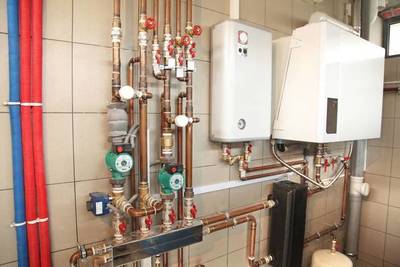
If there are power outages, it is worth considering emergency energy-independent heating system - a wood-burning stove, or install a capacious uninterruptible power supply.
Expensive solar collectors will not work in cloudy weather.
When designing a heating system, it makes sense to communicate more with neighbors and local experts. The best option is not to learn from your own experience, but use an already working scheme, adapting it to your needs.







Comments